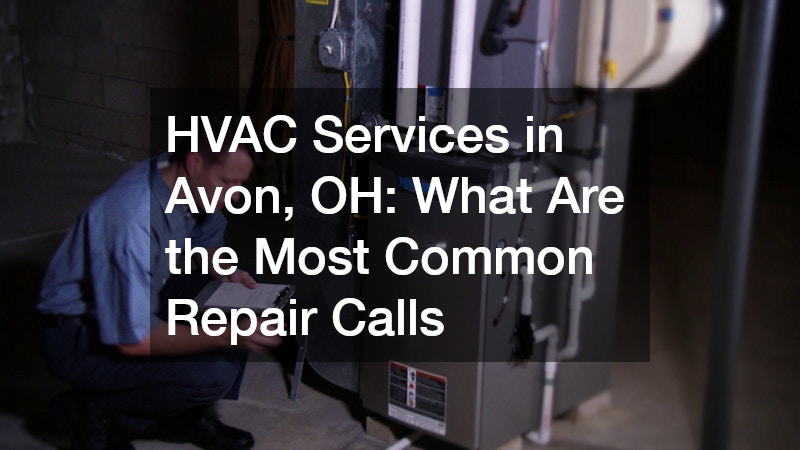Maintaining a healthy indoor environment is crucial for the well-being of residents and the longevity of your HVAC system. Mold growth is a common issue that HVAC systems face, which can lead to health problems and reduced efficiency. This article aims to provide comprehensive information on understanding mold growth in HVAC systems, detecting its signs, and implementing preventive measures. By following the recommended practices, homeowners and HVAC companies can ensure their systems remain free from new mold, thereby ensuring a healthier and more efficient home environment.
Understanding Mold Growth in HVAC Systems

HVAC companies often deal with the challenge of mold growth in the systems they service. Mold thrives in environments with high humidity and poor ventilation. HVAC systems, due to their nature of circulating air and often facing moisture, can become breeding grounds for mold. Addressing mold growth promptly is essential to prevent long-term damage to the system and potential health issues for the occupants.
New mold in HVAC systems can quickly spread through the ductwork and contaminate the air you breathe. This is not only a health hazard but can also reduce the efficiency of the system, leading to higher energy bills and more frequent maintenance needs. HVAC companies recommend regular inspections and maintenance to keep the system clean and mold-free. The presence of mold can also cause unpleasant odors and exacerbate allergies, further impacting the comfort and well-being of your home environment.
Understanding the conditions that lead to mold growth is the first step in prevention. Mold needs moisture, organic material to feed on, and a conducive temperature range to thrive. HVAC systems, if not properly maintained, can provide all these conditions. Therefore, proactive measures, such as controlling indoor humidity and ensuring proper ventilation, are necessary to keep mold at bay and ensure a healthy indoor environment. By staying vigilant and addressing issues early, homeowners can significantly reduce the risk of mold problems.
Signs of Mold Growth in Your HVAC System
Recognizing the signs of mold growth in your HVAC system can help you take swift action before the problem escalates. Local HVAC companies suggest looking out for visible mold around air vents, a musty odor in the home, and frequent allergic reactions among residents as indicators of mold presence. These signs should not be ignored as they can worsen over time, affecting both health and the HVAC system’s performance.
It’s also important to monitor for new mold, even if you’ve previously addressed mold issues. Mold can reappear if the underlying causes are not resolved. Regularly inspect areas of your HVAC system that are prone to moisture build-up, such as the drain pans, coils, and ducts. If you notice any signs of mold, it’s best to contact a professional for a thorough inspection and cleaning.
Another way to detect mold is by checking the air quality in your home. Poor airflow, humidity issues, and an increase in dust can all indicate mold growth. Local HVAC companies emphasize the importance of maintaining good indoor air quality through regular maintenance and cleaning routines to prevent the occurrence of mold.
Regular Inspections: The First Line of Defense
Regular inspections by professional HVAC companies are crucial to preventing mold growth in your system. During these inspections, technicians can identify potential problem areas and take necessary measures to mitigate the risk of mold. AC repair and maintenance should include thorough cleaning of all components to ensure no moisture or mold build-up is present. This proactive approach is essential for maintaining a healthy indoor environment.
Scheduling regular inspections can help in the early detection of mold. Professionals can use specialized equipment to detect mold that might not be visible to the naked eye. Detecting mold early can save homeowners from expensive repairs and health-related issues down the line. HVAC companies recommend inspections at least twice a year, ideally before the start of heating and cooling seasons, to ensure that your system remains in peak condition.
Preventive maintenance routines should also include checking and cleaning of ducts, coils, and pans. Even if mold is not immediately visible, spores can linger and grow when conditions become favorable. Regular inspections act as the first line of defense against new mold and help maintain system efficiency and air quality. Additionally, early detection and remediation can prevent minor issues from escalating into significant problems, further protecting your home and health.
Maintaining Optimal Humidity Levels

Maintaining optimal humidity levels inside your home is essential for mold prevention. High humidity levels create a perfect environment for mold to grow, especially in HVAC systems. Residential HVAC services often include humidity control solutions, such as dehumidifiers, to keep indoor moisture levels in check.
Using a humidistat can help you monitor and control the humidity levels in your home. Ideally, indoor humidity levels should be kept between 30% and 50%. If the humidity level is consistently above this range, it’s advisable to seek a residential HVAC service to assess and correct the issue. Proper humidity levels not only prevent mold growth but also contribute to overall comfort and health.
Dehumidifiers can be integrated into your HVAC system to provide continuous humidity control. These devices remove excess moisture from the air, reducing the risk of mold growth. Regularly checking and maintaining these devices ensures they function effectively in preventing new mold, thereby protecting your HVAC system and indoor air quality.
Cleaning and Replacing Air Filters Regularly
Air filters play a crucial role in preventing mold spores from circulating through your HVAC system. Regular cleaning and replacement of air filters are necessary to maintain system efficiency and prevent mold growth. Local HVAC contractors recommend checking filters monthly and replacing them every 1-3 months, depending on usage and filter type. This regular upkeep helps ensure optimal airflow and reduces the risk of mold proliferation.
Dirty or clogged filters restrict airflow and can create pressure imbalances, leading to moisture build-up in the system. This creates an ideal environment for new mold to develop. Regular maintenance of air filters not only prevents mold but also improves the overall performance and longevity of your HVAC system. Additionally, clean filters help reduce energy consumption by allowing the system to operate more efficiently.
Using high-quality filters that are designed to trap mold spores can provide an additional layer of protection. Consult with local HVAC contractors on the best filter options for your specific system. Ensuring filters are clean and functioning correctly is a simple yet effective strategy in keeping mold growth at bay and maintaining healthy indoor air quality. This investment in regular filter maintenance can significantly enhance your home’s air quality and comfort.
Ensuring Proper Ventilation in Your Home
Proper ventilation is essential for preventing moisture accumulation and mold growth. Ensuring your HVAC system and home are well-ventilated can significantly reduce the risk of mold development. Plumbing repair services often include ventilation solutions to address moisture-related issues, contributing to a healthier indoor environment.
Improving ventilation can be achieved through various methods, such as using exhaust fans in bathrooms and kitchens, opening windows to allow fresh air circulation, and ensuring HVAC system ducts are clean and unobstructed. Proper ventilation expels excess moisture, thereby reducing the conditions that favor mold growth.
Regularly checking and maintaining ventilation systems is crucial for mold prevention. A local plumber can help identify and address any ventilation issues that may contribute to moisture problems. Ensuring your home has adequate ventilation protects against new mold and enhances overall indoor air quality.
Addressing Water Leaks and Moisture Issues

Water leaks and moisture issues are primary contributors to mold growth in HVAC systems. Addressing these issues promptly can prevent mold growth from forming and spreading. Local plumbers can inspect and repair leaks in your home’s plumbing system, ensuring there is no excess moisture that can lead to mold. Additionally, they can help identify potential problem areas that might not be immediately obvious.
Even minor leaks can create significant problems if left unaddressed. Moisture can accumulate in hidden areas, providing a breeding ground for mold. Regular inspections by a local plumber can identify and fix leaks early, preventing mold growth and protecting your HVAC system. Routine checks of areas prone to leaks, such as around windows, pipes, and roofs, can further help in early detection.
Ensuring your home is free from leaks and excess moisture is vital for mold prevention. Working with a plumbing company for regular maintenance can help you manage and mitigate these risks. By addressing these issues proactively, you can prevent new mold and maintain a healthy and efficient HVAC system. This proactive approach not only enhances indoor air quality but also extends the lifespan of your HVAC equipment.
Cleaning Your HVAC System
Regular cleaning of your HVAC system is essential to prevent mold growth. HVAC companies offer specialized cleaning services to ensure all components are free from mold and debris. A thorough cleaning should include ducts, coils, drain pans, and other areas where moisture can accumulate and promote mold growth.
Professional cleaning by a plumbing company ensures that all aspects of your HVAC system are addressed. Technicians use specialized tools and cleaning agents to remove mold and prevent its recurrence. Regular cleaning not only prevents new mold but also enhances the efficiency and lifespan of your HVAC system.
Homeowners can also perform basic cleaning tasks, such as wiping down accessible surfaces and keeping the area around the HVAC unit clean and dry. Regular maintenance and professional cleaning services are complementary strategies for ensuring your system remains mold-free and operates at its best.
Using Mold-Resistant HVAC Components
Investing in mold-resistant HVAC components is a proactive approach to preventing mold growth. Local HVAC companies can provide options for materials and components that are less susceptible to mold. These components include mold-resistant air filters, ducts, and insulation materials designed to inhibit mold growth.
Mold-resistant materials provide long-term protection by creating an environment that is not conducive to mold development. Local plumber services can assist in integrating these components into your existing HVAC system. By choosing mold-resistant options, you can reduce the risk of new mold and ensure a healthier indoor space.
Consulting with HVAC professionals about the best mold-resistant products for your system can provide valuable insights and recommendations. These investments may come at a higher initial cost but can save you from expensive mold remediation and health issues in the long run. Mold-resistant components are a viable option for long-term mold prevention.
Long-Term Strategies for Mold Prevention

Implementing long-term strategies for mold prevention ensures that your HVAC system remains mold-free. Regular inspections, cleaning, and maintenance by residential plumbing and HVAC services are essential components of these strategies. A proactive approach to addressing moisture, leaks, and ventilation is crucial for lasting mold prevention.
In addition, incorporating advanced air filtration systems and humidity controls into your HVAC setup can further enhance mold resistance. These systems work in tandem with routine maintenance to provide comprehensive protection against mold growth. Regular filter changes and ensuring your system is free from obstructions will also contribute to a healthier environment.
Educating yourself and your household about mold prevention practices can also contribute to a healthier home environment. Simple actions, such as promptly drying spills, using dehumidifiers, and ensuring proper ventilation, can significantly reduce the risk of mold growth. Consistent application of these practices keeps your HVAC system in optimal condition.
Partnering with reliable residential plumbing and HVAC services ensures that you receive professional guidance and support in mold prevention. These experts can provide tailored solutions based on your home’s specific needs, offering advanced techniques and technology to safeguard against mold. Long-term mold prevention requires a comprehensive and consistent effort, but the benefits of a mold-free and healthy indoor environment are well worth it.
Mold growth in HVAC systems can pose significant health risks and impact the efficiency of the system. Understanding the signs of mold, maintaining optimal humidity levels, ensuring proper ventilation, and addressing leaks are crucial measures for preventing new mold. Regular inspections and maintenance by professional HVAC companies and plumbing services can help identify and mitigate mold risks early. Investing in mold-resistant components and educating yourself on mold prevention practices ensures long-term protection for your HVAC system and home. By following these comprehensive strategies, homeowners can maintain a healthy indoor environment and enhance the longevity of their HVAC systems.



